Back to the office with a Victorian letter copying press

Earlier this year the State Library became the grateful recipient of a donated copying press. Initially described to us as a book press, our research uncovered its true magnificence as an invention with origins harking back to the Industrial Revolution.
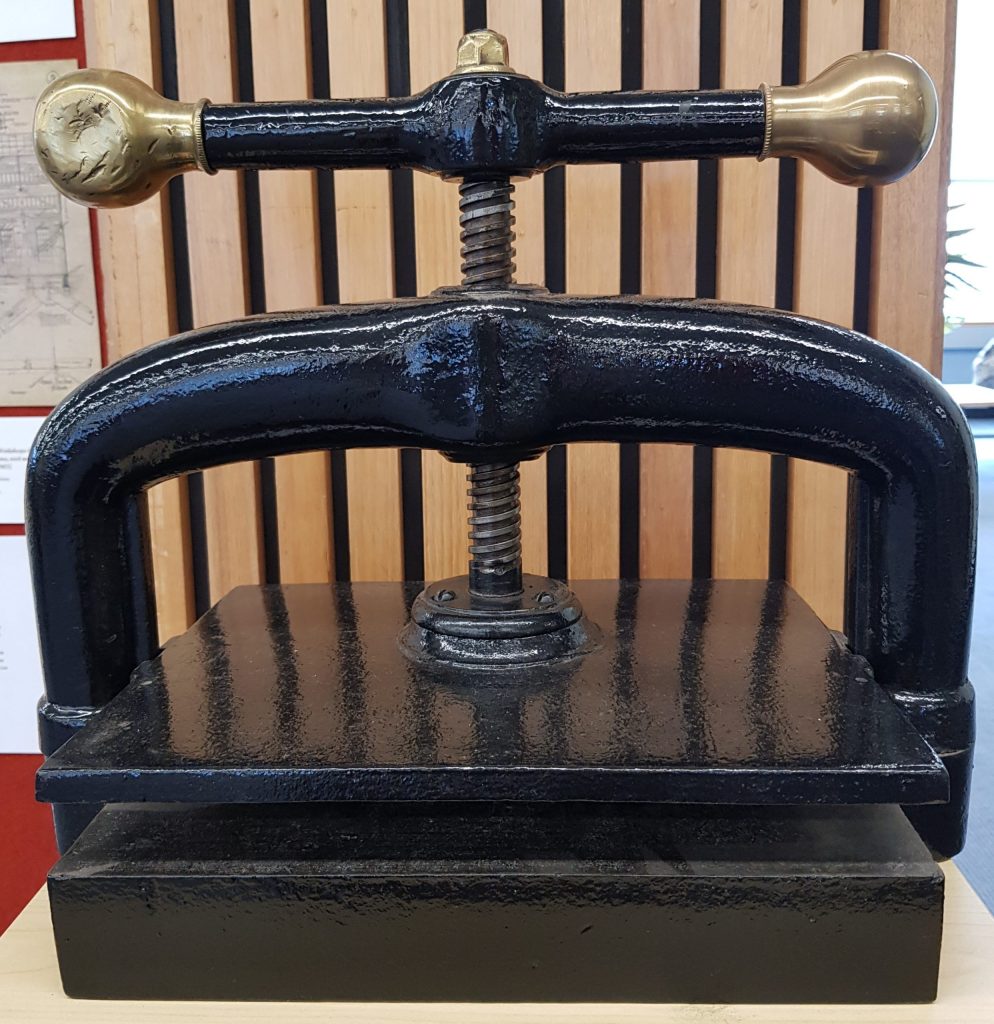
The copying press is now obsolete, but its significance to our collections is verified by the many letterbooks we hold in the the Tasmanian Archives; in fact, the copying press was as important to the office of the 19th century as the email server is to the office of today.
Scottish engineer James Watt patented the first copying press in 1780. He wanted to create a mechanical process that relieved the laborious efforts to copy, by hand, his design specifications and letters relating to the design of his steam engine. His experiments, with inked documents pressed with dampened copy paper under pressure, evolved to become a commercial necessity in the workplace.
Increased commercial activity arose during the First and Second Industrial Revolutions, and this contributed to a prolific rise in use of the copying press. It also represents the declining need for manual labour. Watt’s creation extinguished the roles held by copy clerks, copyists, scriveners, and scribes. We can only imagine how Bob Cratchit—the poor copy clerk working for the miserly Ebenezer Scrooge in Charles Dickens’ novel A Christmas Carol—would feel to have his efforts diminish in importance and then be totally superseded by a cast iron press.
Screw-type copying presses stayed commonly in use until the early 20th century. To make a copy usually required a letter copying book (letterbook). A letterbook was a manufactured item, comprised of thin, plain copying papers bound into a volume. The original letter needed to be written with strong, water-soluble ink, or a special copying pencil. The operator laid the original document on a sheet of oiled paper, then positioned these under a leaf of the book. This leaf was dampened for the transfer, laid on top of the original, followed by another sheet of oiled paper. The copying book was closed, and the entirety pressed briefly between the cast iron plates. The transfer to the book leaf would be in reverse, but read as normal from the top, due to the transparency and quality of the paper. With good inks multiple copies could be made with ever-decreasing strength. This book, with all its letters, would become an important register of all outbound communication, copied in chronological order. The example below shows a good example of a tidy copy, and if you look at the bottom of the image you will detect how transparent the letterbook paper is.
Newspaper advertisements on TROVE show Tasmanian booksellers importing copying presses with all the associated paraphernalia. This commerce grew towards the mid-1850s, and, by this time, presses and letterbooks had now become indispensable for efficient recordkeeping.

The inside cover of one letterbook from the Van Diemen’s Land Company includes instructions for how to use a letter copying book (below). The advertisement gives us a glimpse into the requirements of the Victorian office. Papers of various qualities and inks were available for purchase from reputable manufacturers and distributors from England. The best quality of transparent copying paper was produced for export by the Japanese. The advertisement lists Japanese papers for order, along with a vivid description of Waterlow’s Instantaneous Communicative Ink, the preferred ink:
“…used in Her Majesty’s Public Offices, and in many of the Principal Railway and Commercial Establishments; and is manufactured with the greatest care, and of the finest materials. Warranted to give a distinct copy from 4 to 8 days after writing.”
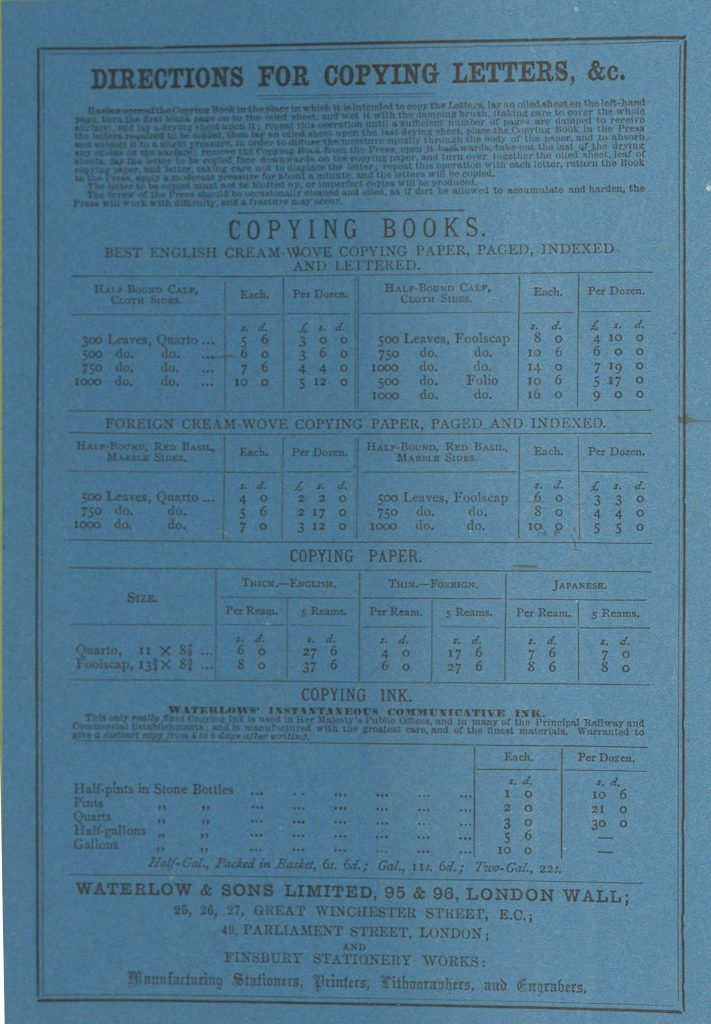
The capacity to make copies 4-8 days after writing the original was owed to the formulation of the ink. Aniline dyes produced in the second half of the 19th century proved to be the best for clarity and reproduction. However, earlier inks were made from a combination of iron gall, iron sulphate, gum Arabic and water, and the miniscule grit contained within iron gall could eat away at the copy papers. Pages with holes caused by iron gall in the ink can evidently be seen in our Tasmanian Archives collection of letterbooks.
We have hundreds of letterbooks in our archives, and they are a fantastic representation of how important copying presses were to early recordkeeping. MB2/24/1/1 Letterbook of W. H. Mcarthur, Shipwright Surveyor is digitised, and you can see an index located at the front of the book, which shows how it allowed for easy retrieval of all correspondence.
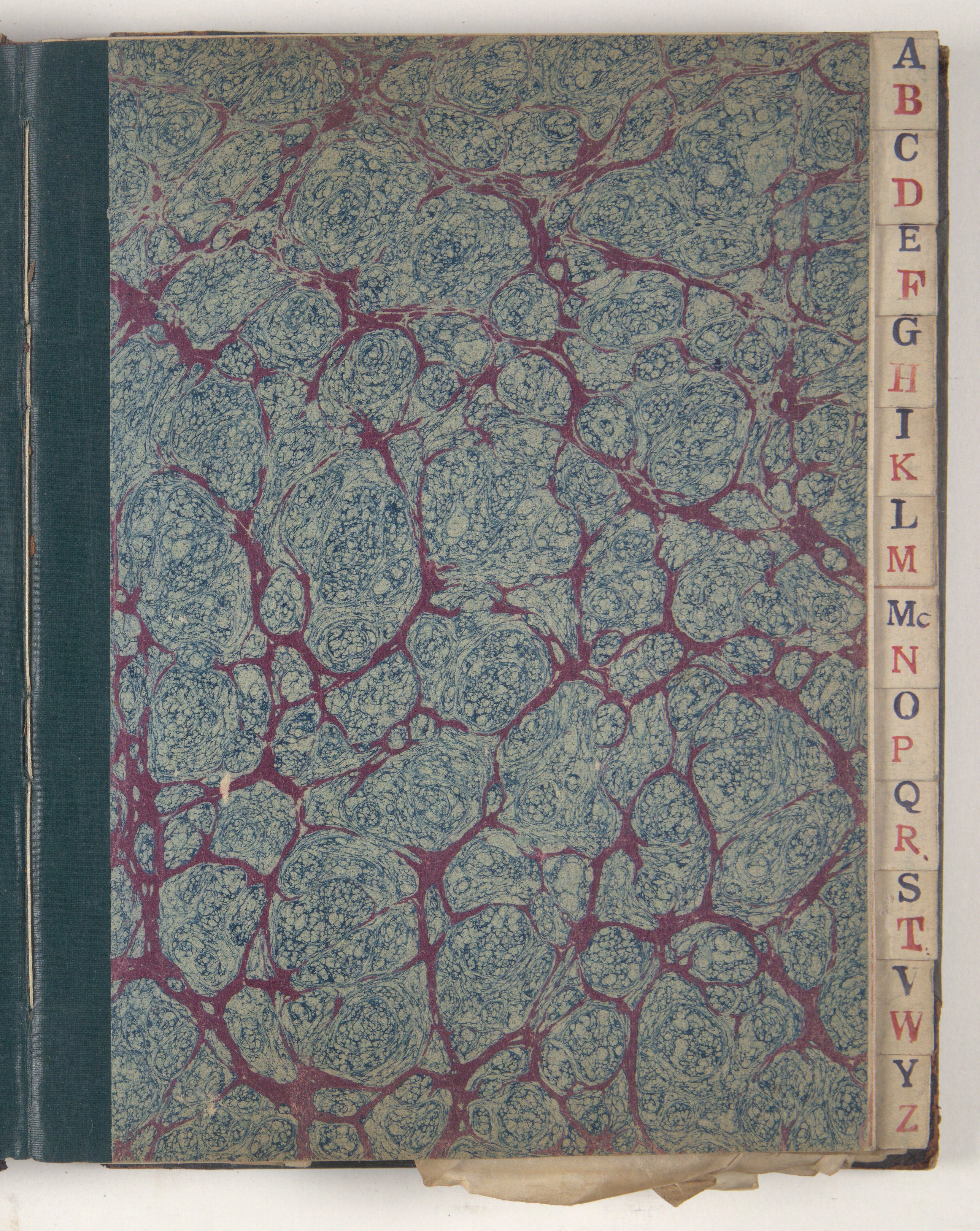
Page 25 (below) clearly shows that something went wrong for the press operator.
Our copying press is a fairly plain one compared to others you will find on the internet, by an unknown maker. The only clue we have is an embossed lion for the maker’s mark which is visible underneath the press.
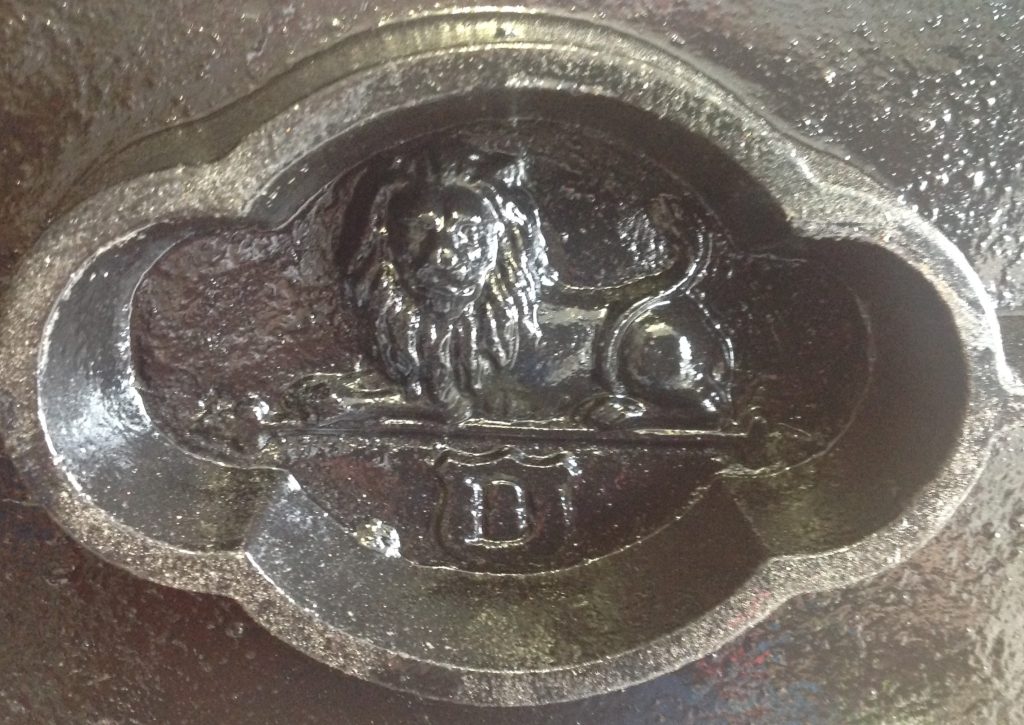
If any reader can tell us the manufacturer of this copying press, we shall be forever grateful. In the meantime, we wish this copying press could talk of its days in the office of olden-day Tasmania— if it could speak we would have some very excited archivists. What wonderful stories they might be!
References
Batterham, I. (2008) The office copying revolution: history, identification and preservation : a manual for conservators, archivists, librarians and forensic document examiners (1st ed). National Archives of Australia, Canberra
Duplicating machines. (2021, 30 January). https://en.wikipedia.org/wiki/Duplicating_machines
Eden Workshops. (2020). The nipping press and copying press. http://www.edenworkshops.com/The_Nipping_Press_&_The_Copying_Press.html
Hayes, L. (2018). Beating, rolling, pressing, collating. Cover to Cover: Exposing the Bookbinder’s Ancient Craft. https://www.adelaide.edu.au/library/special/exhibitions/cover-to-cover/beating-rolling-pressing/

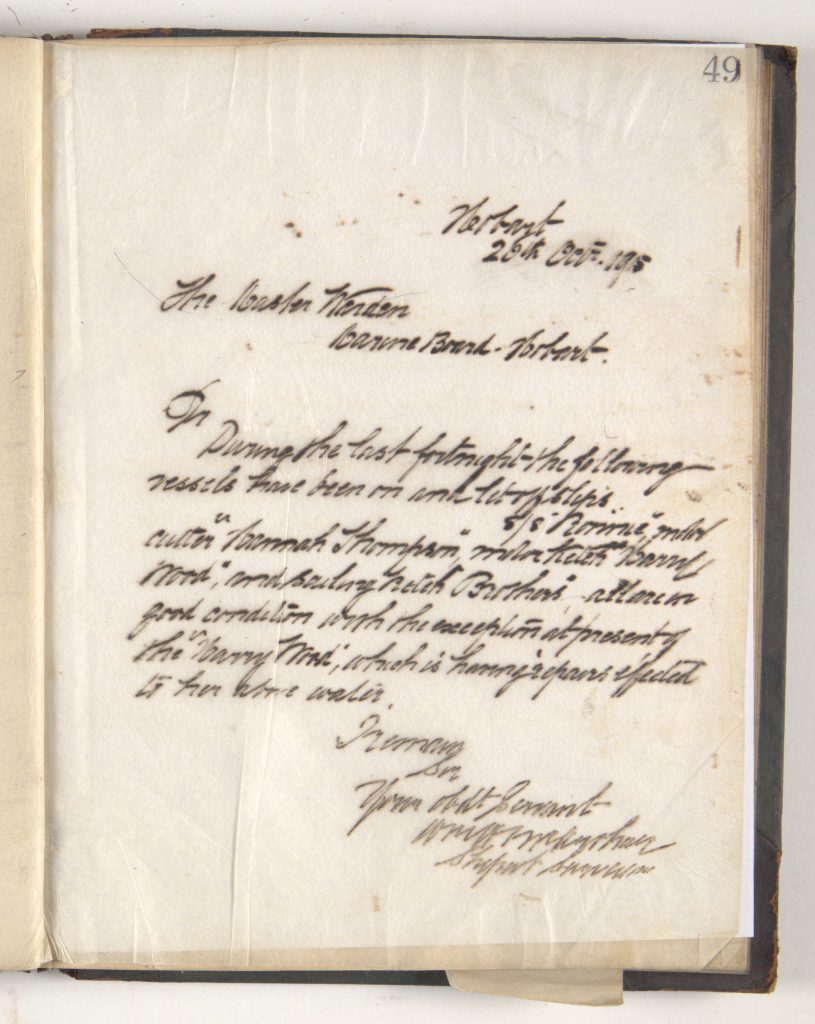
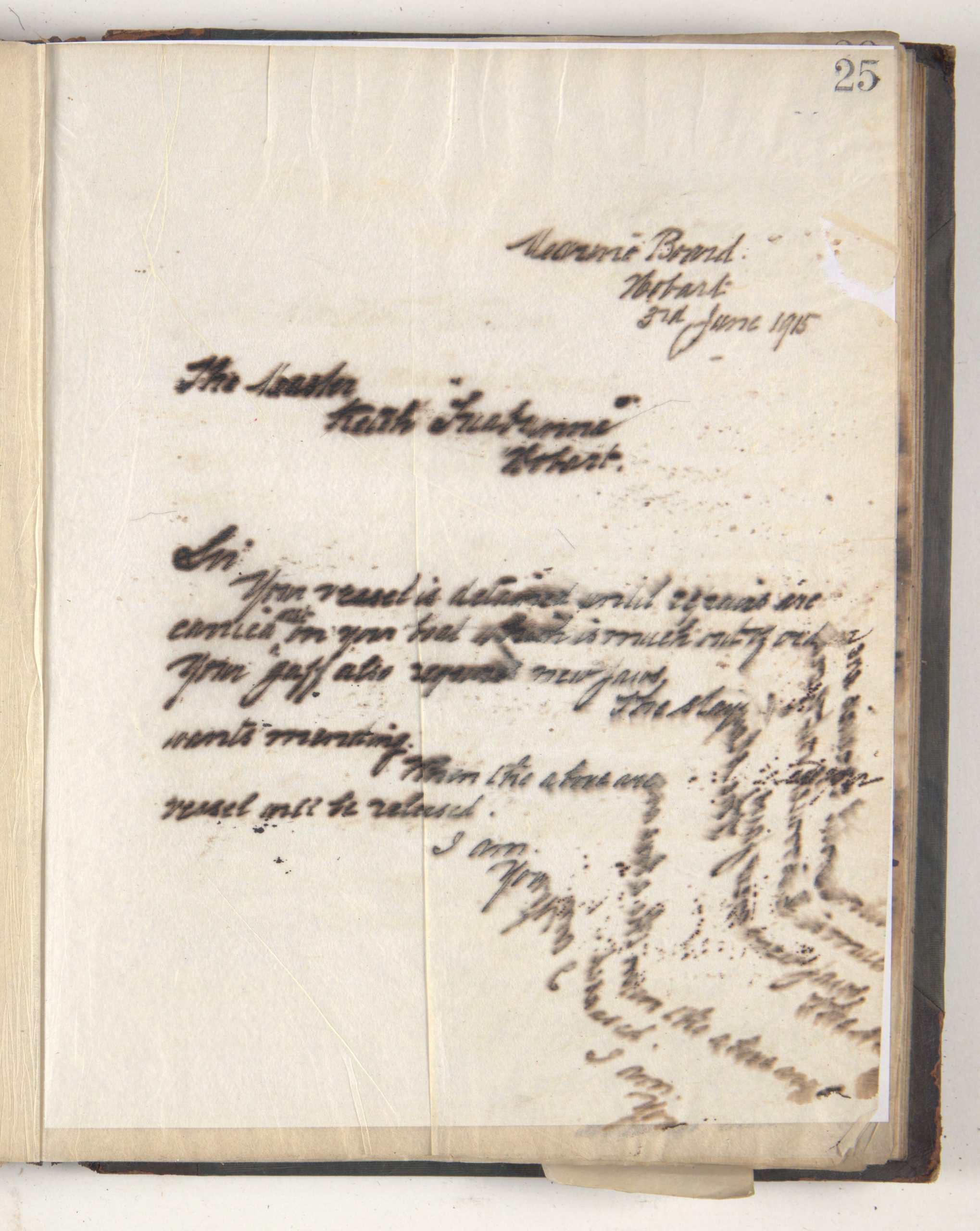

I very much appreciate coming upon this blog entry. The Launceston Mechanics’ Institute & Public Library had two such letterpress copybooks, now in Archives Tasmania and held at the QVMAG.
It turns out that Libraries Tasmania already had three letterbook presses in the Launceston Library of the kind illustrated in the blog – though more workaday in appearance. Presumably these were once used by the LMI and were passed with all their bookstock, equipment, staff and building to the Launceston Corporation in 1945. Subsequently, what survived the intervening years came via the Northern Regional Library to the Launceston Library.
In reply to Mike McCausland.
Thanks for your comments Mike. I’m really happy to know that it was a great find and full of information for you. Researching this item certainly made me a lot more inquisitive about our collections of letterbooks here at Tasmanian Archives. While I suspected this wasn’t a true bookbinding press I was not disappointed to find out its true function as prior to research I had never heard of the copying press. I would love to be go back in time to see these ye olde copiers in action – it would be so interesting!
Jasmine
This may be of some use?
http://www.briarpress.org/28524
My dad used ti use one of these (in fact it looked identical as far as i can remember) – not to print, but in the process of book binding, thus he called it a “book binding press”. He was putting new covers onto volumes in very poor repair that he purchased in garage sales and clearance sales.
An excellent and informative article, thank you very much.
As a researcher of the VDL Co for 35 years I long ago read in their records about acquiring a “copying machine” and had wondered ever since exactly what that might have been. Now I know!
Curiously, I see that it was the VDL Co records form part of this article.